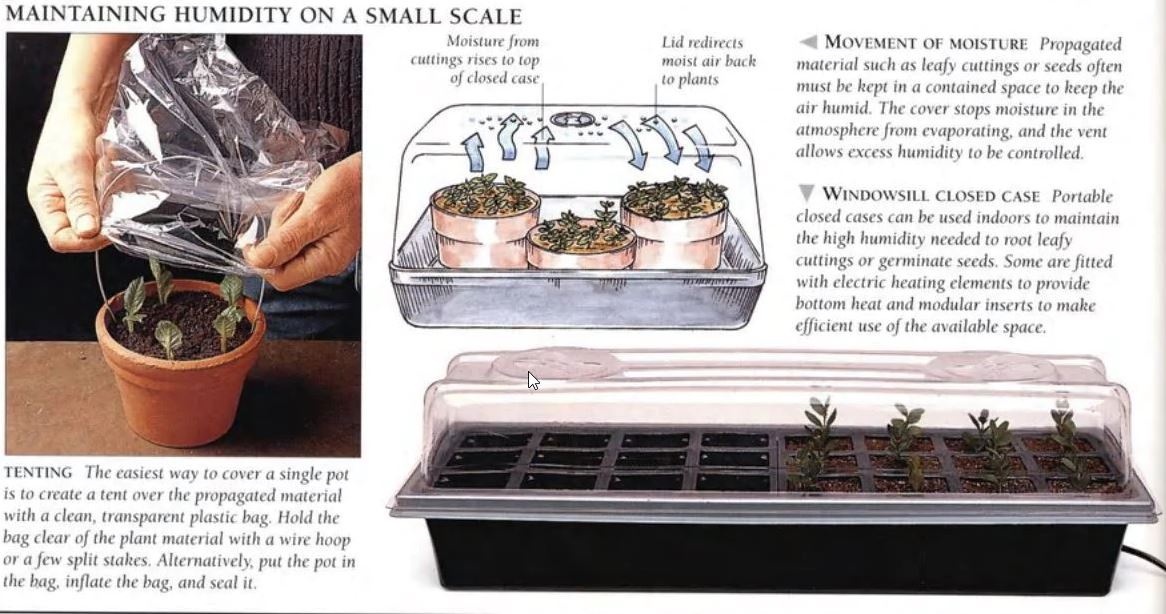Annual and Biennial seeds may be sown under cover or outdoors, depending on their hardiness and local conditions. When buying seeds, you may choose F1 hybrids for their uniformity, but naturally or open-pollinated seeds are usually quite acceptable and less costly. With home collected seeds, bear in mind that only seeds of species come true to type. Hybrid seeds will differ in varying degrees from the parents.
PLANTING DEPTH:
The general rule of thumb for seed planting depth is:
Plant seeds at a depth of 2 to 3 times their diameter.
GUIDELINES:
- Tiny seeds (e.g., lettuce, petunias) → Sprinkle on the surface and lightly press into the soil or lightly dust with vermiculite.
- Small to medium seeds (e.g., tomatoes, marigolds) → 1/8 to 1/4 inch (3-6 mm) deep.
- Larger seeds (e.g., beans, sunflowers) → 1/2 to 1 inch (1.2-2.5 cm) deep.
- Very large seeds (e.g., pumpkins, corn) → 1-2 inches (2.5-5 cm) deep.
Tip: If unsure, it’s better to plant too shallow than too deep. Seeds need light, moisture, and air to germinate!
WHEN TO SOW ANNUALS AND BIENNIALS
In regions that experience frost, annuals may be started indoors in late winter, spring, or early summer in containers under cover, in temperatures of 55-70F (13-21C), according to the genus and planted out when all danger of frost is past.
They may also be sown directly in open ground in spring where they are to flower, when the soil has warmed up to at least 45F (7C).
They may also be sown in containers in areas where the open garden soil is heavy and wet, which may cause the seeds to rot.
BIENNIALS are sown under glass or outdoors in a nursery bed from late spring to midsummer, depending on how fast they grow. The seedlings are transplanted in nursery rows to grow on then planted in their flowering positions in summer or autumn.
In warm, frost-free climates, large seeds of annuals and biennials may be sown directly in the open ground as soon as the soil is warm enough, where they are to flower or in nursery beds.
FINE OR EXPENSIVE SEEDS are better sown in containers, where growing conditions are more easily controlled, as are seeds of less vigorous plants. Make successive sowings for outdoor plantings to achieve a longer flowering season.
SOWING IN CONTAINERS
Pots, pans, seed trays and cell packs are suitable, depending on the amount or type of seeds to be sown. Too large a container wastes space and soil mix; one too small can lead to thick sowing, causing damping off and weak seedlings.
Large seeds may be sown in rockwool cells to create plug plants. Degradable pots are useful for plants that dislike root disturbance.
To prepare the container, fill it to its brim with seed soil mix. Tap the container to get rid of any air pockets. Firm a soil-based mix reasonably well with your fingertips, particularly in the corners, before leveling the surface to about ¼ inch (5mm) below the rim, using a flat wooden board or presser. Firm soilless mix only very lightly before leveling. Thoroughly moisten the soil mix by standing the container in water or watering it overhead using a watering can fitted with a fine hose. Add a suitable fungicide to the water to avoid damping off. Allow the container to drain.
Sow seeds straight from the packet, a fold of paper, or your palm. Tap gently to release the seeds slowly, and sow thinly and evenly over the soil mix. Space-sow large or pelleted seeds one by one. Mix tiny seeds with equal parts of fine, dry sand to ensure even sowing.
No covering is necessary for fine seeds sown with sand - just press the seeds into the soil mix surface with a presser or empty container of the same size.
Cover other seeds with a layer of soil mix or fine-grade vermiculite to keep the seeds in contact with the moist mix. If the covering layer is dry, moisten it with a mist-sprayer. Stop the mix from drying out by covering the container with a plastic or placing it in a closed case. If necessary, shade the container from direct sun.
GERMINATING THE SEEDS
The temperature and light needed for germination varies according to the genus. In cool climates, a heated closed case on the greenhouse bench is ideal, but a windowsill in a warm room suffices for a wide range of annuals. You can also use a heat mat specifically made for gardening and place it underneath the cell tray/seed tray with a plant light overhead.
Check the container regularly and remove the lid or coverings as soon as germination occurs. Place the container in full light, but shade the seedlings from the strong sun. Keep the soil mix moist at all times to maintain steady growth until the seedlings are ready to transplant.
VERMICULITE
Vermiculite allows air and light to reach the seeds, so it is useful for covering seeds that require light to germinate. It also reduces the risk of damping off. Sow seeds as usual in a pot or tray and cover with ¼ inch (5mm) of fine-grade vermiculite.
Please be advised that this is a GENERAL guide to germinating Annual and Biennial seeds. There are multiple resources on the web that are available and specifically tailored to the genus of the plant.
From personal experience, we had the best success by using a plastic seed tray, dome lid, heating mat and plant lights to get the seeds started. This way we were able to control the temperature and light requirements of the plants.

